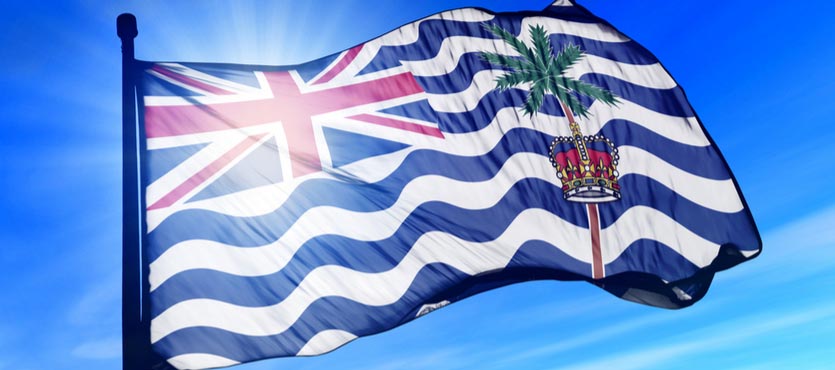Considering that it is a tiny, isolated atoll that is almost exactly in the center of the Indian Ocean, Diego Garcia has a rather colorful history and an important role in global security.
The 17-square-mile sand and coral atoll is technically part of the British Indian Ocean Territory, but U.S. forces have been there since 1966, and they will probably remain there until at least 2036, when the current lease expires. NASA has a presence there, as well, as the island is home to one of three GPS ground antennas, and it is also an operational base for the Space Surveillance Network.
Aside from occasional naval exercises, the base on Diego Garcia is almost entirely logistical. But that has not always been the case.
Recent History
Details are sketchy, but in the early 2000s, Diego Garcia may have been a waystation for prisoners captured in the War on Terrorism. Lawrence Wilkerson, who was chief of staff for Secretary of State Colin Powell from 2002 through 2005, once said that the atoll was home to various and sundry “nefarious activities,” including detention and torture. Hambali, and Al-Qaeda terrorist linked to a 2002 bombing in Bali, was supposedly detained on Diego Garcia for about eight weeks.
A 1984 General Accounting Office review states that there is a prison on the island, so these reports may have some credibility. Additionally, a U.K. human right group insists that “Diego Garcia was used for CIA renditions.” Somewhat curiously, especially for any conspiracy theorists out there, an unclassified 600-page summary of a 2014 Senate Intelligence Committee report on alleged CIA prisoner abuse contained no mention whatsoever of Diego Garcia.
About a decade earlier, some politicians in India called for the United States to close its base on Diego Garcia because the Cold War had ended and the installation represented a threat to peace in the region. The two sides eventually patched things up, and there have even been a few joint U.S.-Indian naval exercises around the atoll. This rapprochement largely came about not because the U.S. Navy was interested in regional peace, but because U.S. forces could better respond to emergencies in the Persian Gulf from permanent bases in Saudi Arabia and elsewhere in the region.
Shortly before the U.S. built the base in the late 1960s, there was also some controversy over deportations. To construct such a large installation, officials determined that the local population must be removed. British officials assured Americans that there were only a few hundred Chagossians, but there may have been about 2,000. Beginning in 1968, the British did not allow any Chagossians who left the island for medical treatment, or for whatever reason, to return. Territorial officials also reduced supplies, apparently with the hope that the remaining Chagossians would voluntarily leave. There are also unconfirmed stories that the British killed some household pets to coerce holdouts off the island.
To the British, these measures may have been justified because the Chagossians were not native inhabitants, but rather the descendants of persons that the French brought in to work coconut plantations.
Current Activity
Right now, there are four U.S. Air Force squadrons on Diego Garcia, in addition to over a dozen ships from the Second United States Marine Pre-positioning Squadron. These ships deploy troops, armored personnel carriers, and even a full military hospital. The island is also an emergency landing strip for commercial airliners making nonstop runs between Perth and Dubai, Singapore and Sao Paulo, or Johannesburg and Hong Kong.
There are usually about 2,500 contractors on Diego Garcia as well, performing services such as:
- Longshore Work: All supplies come in by ship, typically from Singapore. When the ships are unloaded, they must be loaded again with non-biodegradable waste and a host of other items, because there are no disposal facilities on the tiny atoll.
- Construction: The Seabees built the base in the early 1970s, but the DoD now contracts with private construction firms to improve the existing facilities, erect new ones, and do whatever else needs to be done.
Because Diego Garcia is so isolated, there is basically no oversight other than military commanders and company managers. Moreover, if contractors are injured, there are few medical facilities at the base, other than military medical facilities and first-aid stations.
Injury Compensation
Programs like the U. S. Longshore and Harborworkers Compensation Act and the Defense Base Act are vital at installations like this one because the benefits provided by these programs help ensure that injured victims receive top-shelf medical care. Such medical care includes:
- Emergency treatment,
- Corrective surgery,
- Follow-up treatment, and
- Physical rehabilitation.
Attorneys can help victims obtain the treatment they need with no out-of-pocket costs, even if the insurance company initially denies coverage.
The DBA also pays lost wages. Typically, victims receive two-thirds of their average weekly wage until they are fully ready to go back to work.
For assistance in obtaining these benefits, contact Barnett, Lerner, Karsen & Frankel.

